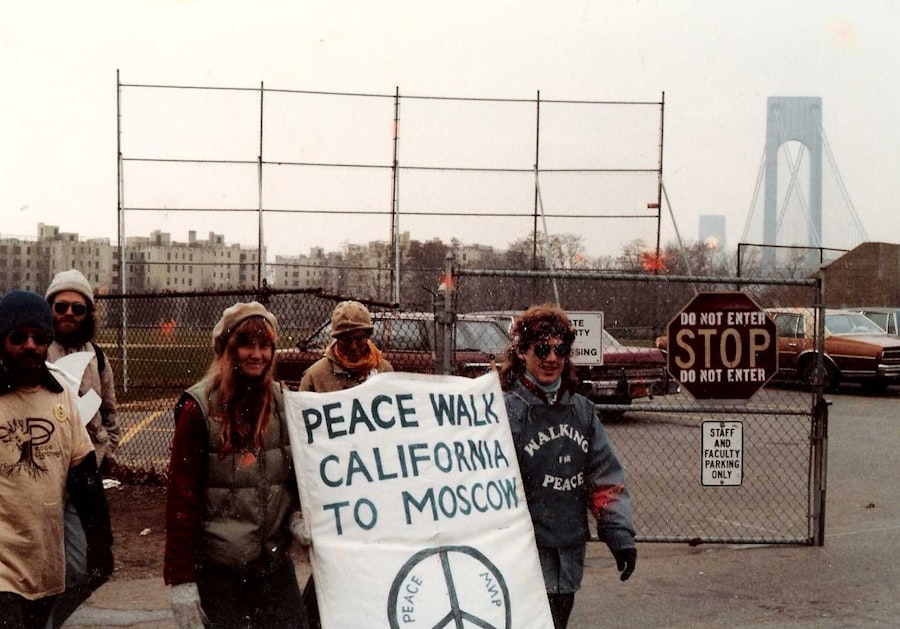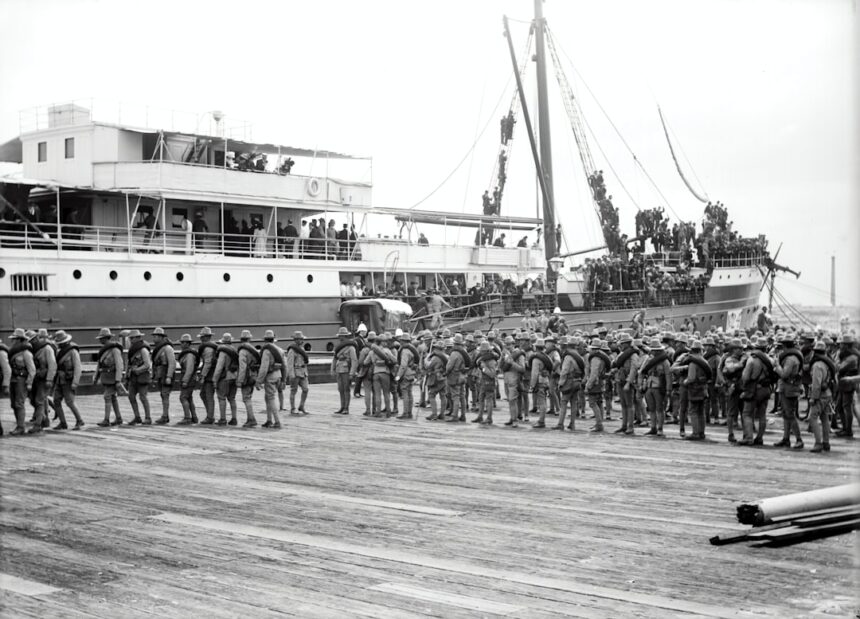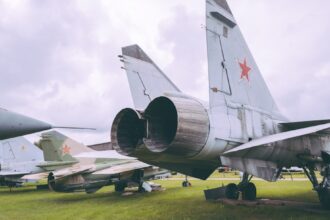The Cold War emerged in the aftermath of World War II, a period marked by significant geopolitical shifts and ideological confrontations. As the dust settled from the devastation of the war, two superpowers began to rise: the United States and the Soviet Union. Their contrasting ideologies—capitalism and democracy versus communism and authoritarianism—set the stage for a prolonged period of tension and rivalry.
The Yalta Conference in 1945, where leaders from the Allied powers discussed post-war reorganization, highlighted the growing rift between these two nations. While they had united against a common enemy in Nazi Germany, their visions for the future of Europe and the world diverged sharply. The division of Europe into spheres of influence became increasingly apparent with the establishment of the Iron Curtain, a term popularized by Winston Churchill to describe the boundary separating Western Europe from Eastern Europe.
The Soviet Union’s expansionist policies in Eastern Europe, including the imposition of communist governments in countries like Poland, Hungary, and Czechoslovakia, alarmed Western leaders. The United States responded with a policy of containment, aimed at preventing the spread of communism beyond its existing borders. This ideological battle would shape international relations for decades, leading to a series of confrontations that defined the Cold War era.
Key Takeaways
- The Cold War originated from the ideological and political differences between the United States and the Soviet Union after World War II.
- The United States and the Soviet Union played central roles in the Cold War, engaging in a global power struggle and influencing international affairs.
- The spread of communism and the Domino Theory led to the United States’ intervention in various countries to prevent the spread of communism.
- The Arms Race and Nuclear Proliferation escalated tensions between the United States and the Soviet Union, leading to the development of massive nuclear arsenals.
- The Space Race and the Race for Technological Supremacy became symbolic of the competition between the United States and the Soviet Union for global dominance.
The Role of the United States and the Soviet Union
The United States and the Soviet Union played pivotal roles in shaping the dynamics of the Cold War. The U.S., emerging from World War II as an economic powerhouse, sought to promote democracy and capitalism around the globe. Its Marshall Plan, initiated in 1948, aimed to rebuild war-torn Europe and prevent countries from falling under communist influence by providing financial aid and support for economic recovery.
This initiative not only helped to stabilize Western European nations but also solidified alliances that would become crucial during the Cold War. Conversely, the Soviet Union aimed to expand its influence by supporting communist movements worldwide. Under Joseph Stalin’s leadership, the USSR sought to create a buffer zone of friendly states in Eastern Europe to protect against perceived threats from the West.
This led to a series of confrontations, including the Berlin Blockade in 1948, where the Soviets attempted to cut off access to West Berlin in response to Western efforts to unify Germany. The U.S. and its allies responded with the Berlin Airlift, demonstrating their commitment to countering Soviet aggression.
This rivalry between the two superpowers would manifest in various forms throughout the Cold War, influencing global politics and military strategies.
The Spread of Communism and the Domino Theory

The spread of communism became a central concern for U.S. policymakers during the Cold War, leading to the formulation of the Domino Theory. This theory posited that if one country fell to communism, neighboring countries would inevitably follow suit, much like a row of dominoes toppling one after another.
This belief was particularly evident in Southeast Asia, where U.S. involvement in Vietnam was justified by fears that a communist victory there would lead to a broader regional shift towards communism. The Domino Theory significantly influenced American foreign policy decisions throughout the 1950s and 1960s.
The U.S. engaged in military interventions and supported anti-communist regimes across various regions, including Latin America and Africa. The fear of communism spreading beyond its borders led to increased military spending and a commitment to containing Soviet influence globally.
This mindset not only shaped U.S. actions but also contributed to tensions with nations that embraced socialist or communist ideologies, often resulting in violent conflicts and civil wars.
The Arms Race and Nuclear Proliferation
| Country | Nuclear Warheads | Nuclear Tests |
|---|---|---|
| United States | 6,185 | 1,054 |
| Russia | 6,375 | 715 |
| China | 320 | 45 |
| France | 300 | 210 |
| United Kingdom | 215 | 45 |
The Cold War was characterized by an intense arms race between the United States and the Soviet Union, as both nations sought to amass nuclear weapons and advanced military technology. The development of atomic bombs during World War II set off a competition for supremacy in nuclear capabilities that would dominate international relations for decades.
As both superpowers expanded their arsenals, they engaged in a series of tests and demonstrations of military might. The Cuban Missile Crisis in 1962 brought the world to the brink of nuclear war when U.S. reconnaissance flights discovered Soviet missiles stationed in Cuba.
This confrontation underscored the dangers of nuclear proliferation and highlighted the precarious balance of power between the two nations. In response to these tensions, various treaties were negotiated, such as the Nuclear Non-Proliferation Treaty (NPT) in 1968, aimed at curbing the spread of nuclear weapons and promoting disarmament.
The Space Race and the Race for Technological Supremacy
The Cold War also spurred a fierce competition in technological advancements, most notably exemplified by the Space Race. Initiated by the launch of Sputnik by the Soviet Union in 1957, this race represented not only a quest for scientific achievement but also a demonstration of ideological superiority. The successful launch of Sputnik shocked Americans and ignited fears that the Soviets were ahead in technological capabilities, prompting significant investments in education and research within the United States.
In response to this perceived threat, President John F. Kennedy set an ambitious goal for America: landing a man on the Moon by the end of the 1960s. This objective galvanized national efforts and led to remarkable advancements in space technology.
The Apollo 11 mission in 1969 ultimately achieved this goal, marking a significant victory for the United States in the Space Race. The competition extended beyond mere exploration; it symbolized broader ideological battles between capitalism and communism, with each side striving to showcase its superiority through technological prowess.
Proxy Wars and the Global Impact of the Cold War

The Cold War was marked by numerous proxy wars, where both superpowers engaged indirectly through third-party nations rather than direct confrontation. These conflicts often arose from local struggles for power but were heavily influenced by U.S. and Soviet interests. In Korea, Vietnam, Afghanistan, and various African nations, both superpowers provided military support, funding, and training to opposing factions, leading to devastating consequences for those countries involved. The global impact of these proxy wars was profound, as they often resulted in prolonged violence and instability in regions far removed from U.S.-Soviet tensions. For instance, in Vietnam, American involvement escalated into a full-scale war that resulted in millions of casualties and significant social upheaval within the United States itself. Similarly, Soviet intervention in Afghanistan during the late 1970s led to a decade-long conflict that drained resources and contributed to internal dissent within the USSR. These proxy wars not only shaped regional dynamics but also had lasting effects on international relations and perceptions of both superpowers.
The Role of Non-Aligned Nations and the Non-Aligned Movement
Amidst the intense rivalry between the United States and the Soviet Union, many nations sought to carve out an independent path through non-alignment. The Non-Aligned Movement (NAM), established during the 1950s and 1960s, aimed to provide an alternative for countries that did not wish to align themselves with either superpower bloc. Leaders such as India’s Jawaharlal Nehru, Egypt’s Gamal Abdel Nasser, and Yugoslavia’s Josip Broz Tito played crucial roles in promoting this movement.
Non-aligned nations sought to assert their sovereignty while advocating for peace and cooperation among countries regardless of their ideological affiliations. They emphasized principles such as mutual respect for sovereignty, territorial integrity, and non-interference in domestic affairs. While non-alignment did not eliminate external pressures from both superpowers, it provided a platform for smaller nations to voice their concerns on global issues such as colonialism, economic inequality, and disarmament.
Espionage and the Role of Intelligence Agencies
Espionage became a critical component of Cold War dynamics as both superpowers sought to gain an advantage over one another through intelligence gathering and covert operations. Agencies such as the CIA (Central Intelligence Agency) in the United States and the KGB (Committee for State Security) in the Soviet Union played pivotal roles in this clandestine battle for information. These agencies engaged in various activities ranging from surveillance to infiltration of foreign governments.
The use of espionage often led to significant geopolitical events that shaped international relations during this period. High-profile incidents such as U-2 spy plane missions over Soviet territory heightened tensions between Washington and Moscow. Additionally, covert operations aimed at undermining or overthrowing foreign governments became commonplace; examples include U.S.-backed coups in Iran (1953) and Chile (1973).
These actions not only reflected Cold War rivalries but also had lasting implications for global politics and perceptions of both superpowers.
The Impact of the Cold War on Culture and Society
The Cold War extended beyond political and military realms; it permeated culture and society on both sides of the Iron Curtain.
This climate fostered an atmosphere of suspicion that affected various aspects of life, including entertainment, education, and civil liberties.
Conversely, Soviet society experienced its own cultural restrictions under communist rule. State-sponsored propaganda promoted ideals aligned with Marxist-Leninist principles while suppressing dissenting voices or alternative viewpoints. Artists, writers, and intellectuals faced censorship or persecution if their work was deemed counter-revolutionary or critical of the regime.
Despite these constraints, cultural exchanges occasionally occurred between East and West, highlighting shared human experiences even amidst ideological divides.
The Fall of the Berlin Wall and the End of the Cold War
The fall of the Berlin Wall on November 9, 1989, marked a watershed moment in history that symbolized not only the end of physical barriers but also ideological divisions between East and West. As East Germans began to dismantle this symbol of oppression, it sparked a wave of revolutions across Eastern Europe that ultimately led to the collapse of communist regimes throughout the region. This momentous event signaled a shift towards democracy and freedom for millions who had lived under authoritarian rule.
The subsequent dissolution of the Soviet Union in 1991 effectively marked an end to the Cold War era. The ideological battle between capitalism and communism had reached its conclusion as former Soviet republics embraced democratic reforms while transitioning towards market economies. This transformation reshaped global politics as new alliances formed based on shared values rather than ideological affiliations.
The Legacy of the Cold War and its Continuing Impact on Global Politics
The legacy of the Cold War continues to influence global politics today as many contemporary conflicts can be traced back to this tumultuous period. The ideological divisions established during this time have left lasting scars on international relations; tensions between Russia and NATO remain palpable as historical grievances resurface amidst modern geopolitical challenges. Moreover, issues such as nuclear proliferation persist as nations grapple with balancing security concerns against disarmament efforts initiated during earlier decades.
The lessons learned from Cold War confrontations inform current diplomatic strategies as leaders navigate complex relationships shaped by historical legacies while striving for stability in an increasingly interconnected world. In conclusion, understanding these multifaceted dimensions provides valuable insights into how past events continue shaping contemporary global dynamics while reminding us that history often reverberates through time long after its immediate consequences have faded away.
In exploring the intricate dynamics of the Cold War, one cannot overlook the clandestine operations and espionage that defined this tense period. A fascinating read that delves into these covert activities is the article titled “The Secret History of the Cold War,” which provides an in-depth analysis of the strategies employed by both superpowers. For those interested in further exploring this topic, a related article can be found on the website “In The War Room.” This article offers additional insights into the political maneuvers and intelligence operations that shaped the era. You can read more about it by visiting In The War Room.
WATCH THIS! 🪖How Stolen Nazis Built Cold War Power
FAQs
What is the secret history of the Cold War?
The secret history of the Cold War refers to the lesser-known or hidden aspects of the conflict between the United States and the Soviet Union and their respective allies from the end of World War II in 1945 to the dissolution of the Soviet Union in 1991.
What are some examples of the secret history of the Cold War?
Examples of the secret history of the Cold War include covert operations, espionage, propaganda campaigns, and proxy wars fought in various regions around the world. These activities were often conducted in secret and were not widely known to the public at the time.
How did the secret history of the Cold War impact global events?
The secret history of the Cold War had a significant impact on global events, shaping the political, economic, and social landscape of many countries. Covert operations and proxy wars often led to destabilization, conflict, and human rights abuses in regions such as Latin America, Africa, and Asia.
What role did espionage play in the secret history of the Cold War?
Espionage played a crucial role in the secret history of the Cold War, with both the United States and the Soviet Union engaging in extensive intelligence-gathering activities. This included the use of spies, surveillance, code-breaking, and other clandestine methods to obtain information about each other’s military capabilities, political intentions, and technological advancements.
How has the understanding of the secret history of the Cold War evolved over time?
The understanding of the secret history of the Cold War has evolved over time as declassified documents, memoirs, and historical research have shed light on previously unknown or misunderstood aspects of the conflict. This has led to a more nuanced and complex understanding of the Cold War and its impact on global affairs.




